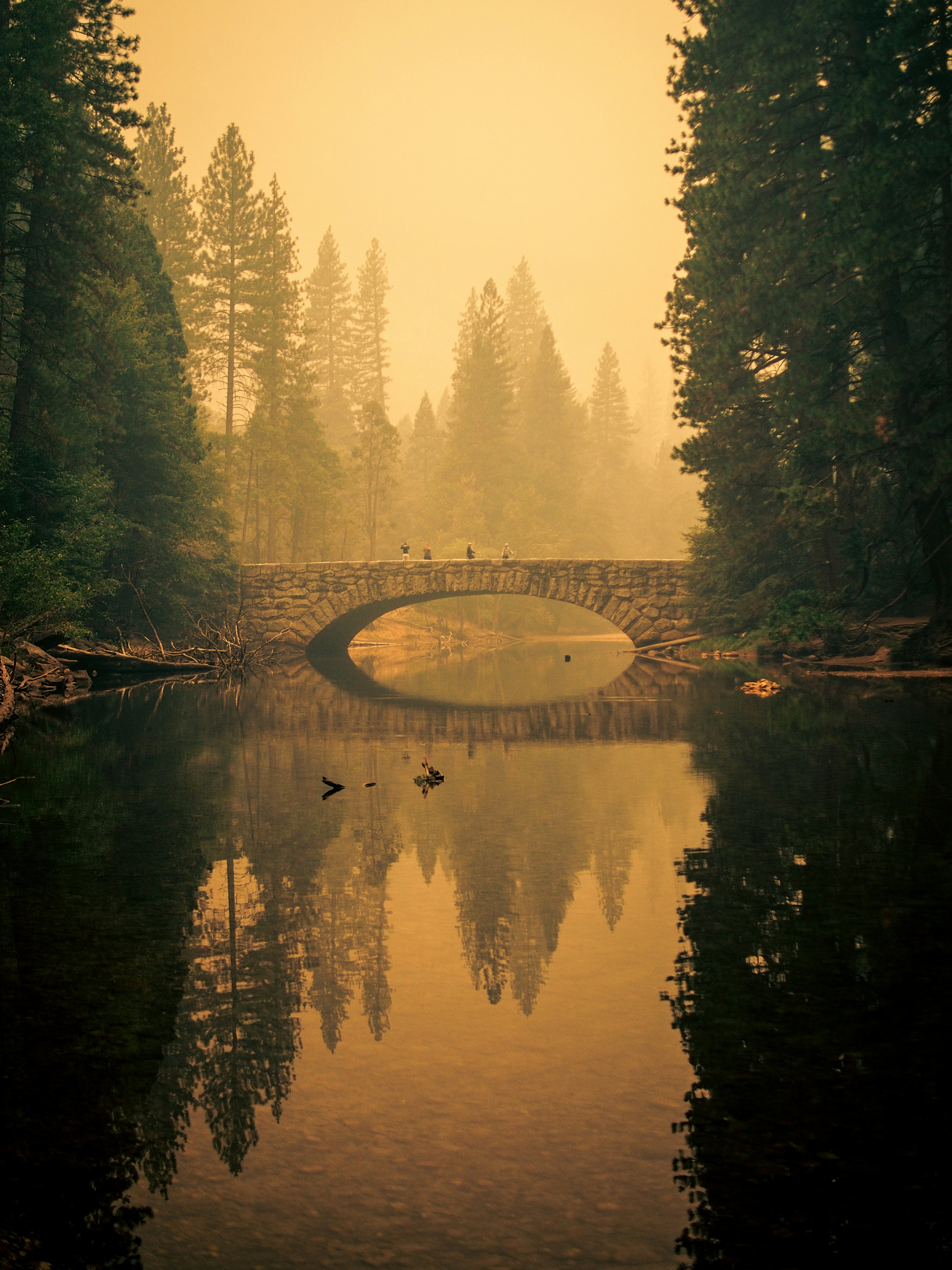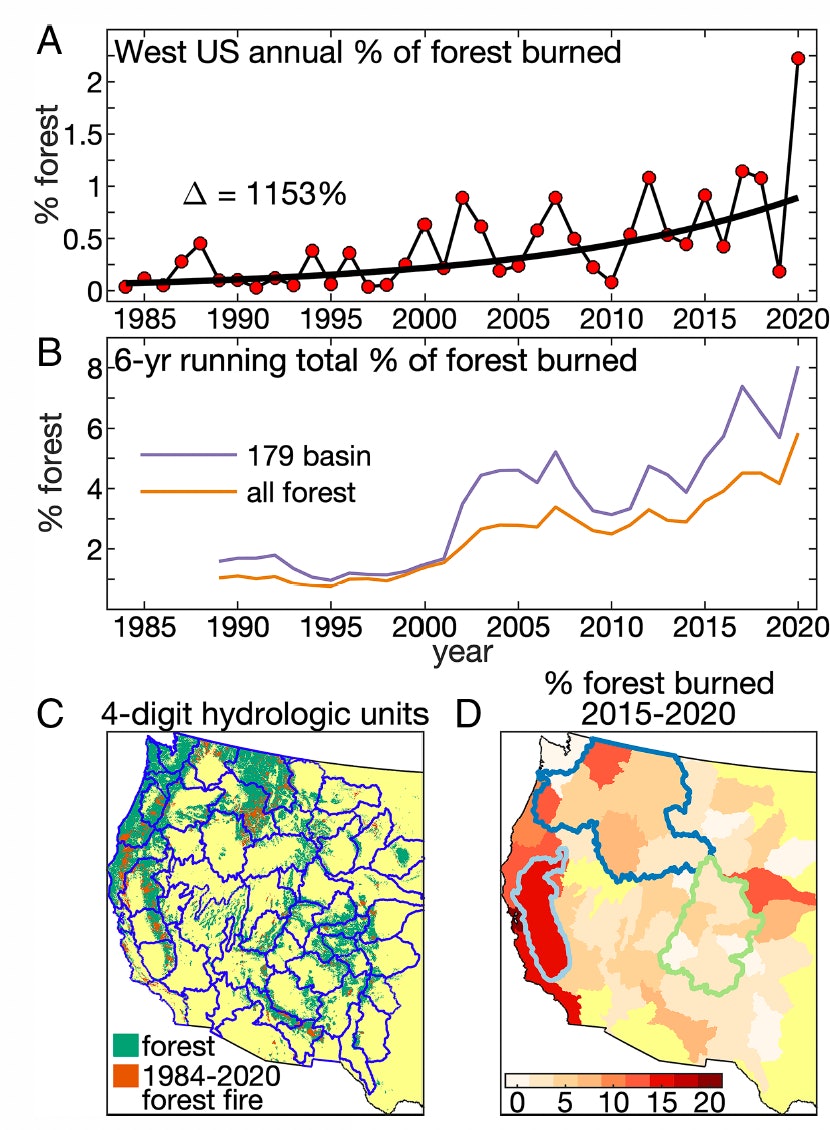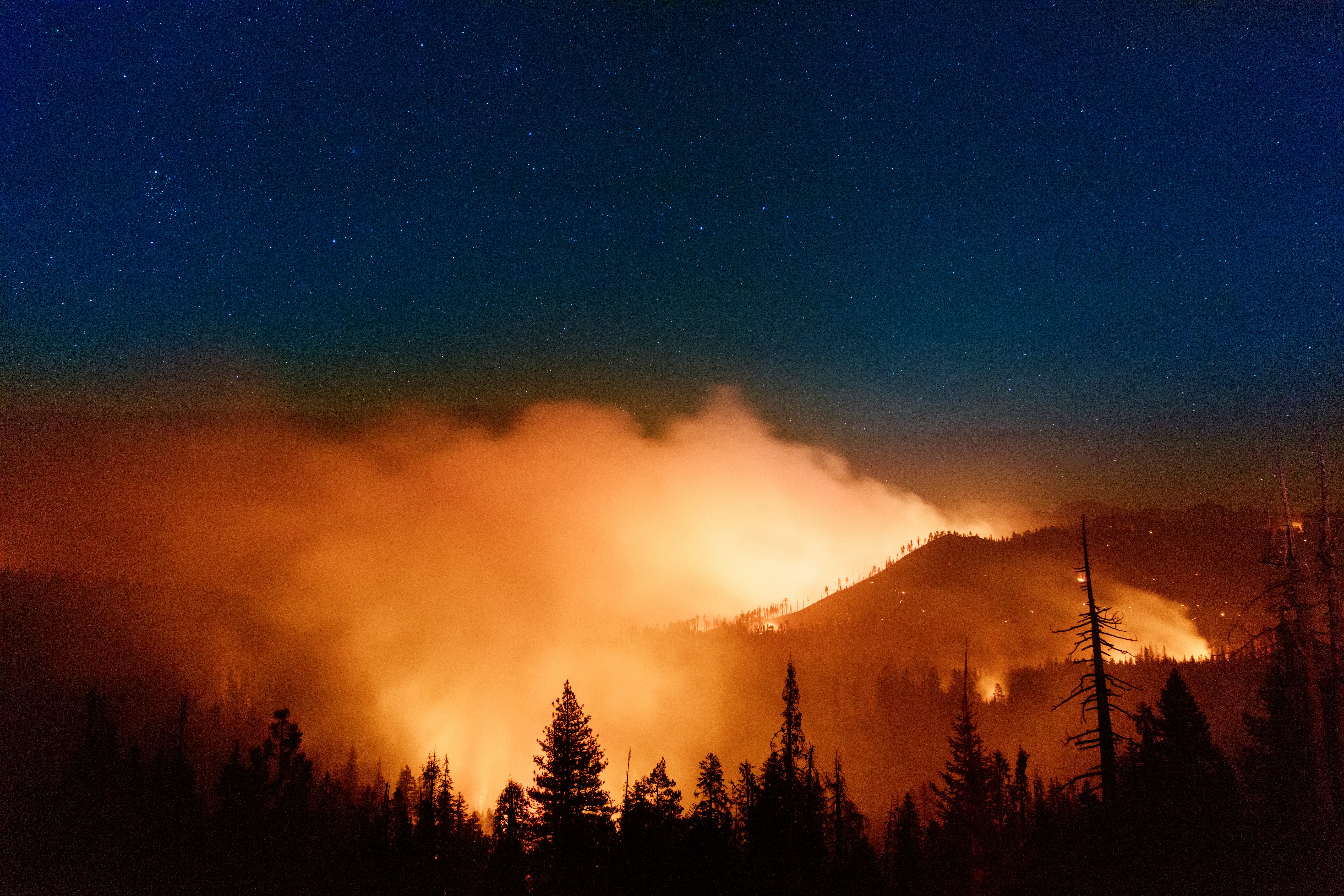
In 2020, fires burned more than six percent of California’s forests — an alarming harbinger of a future where wildfire season runs year-round.
Scientists already link these severe, frequent wildfires in the western U.S. to climate change. Still, new research also reveals that wildfires may have a surprising effect on water resources in this drought-stricken region. Published in the journal Proceedings of the National Academy of Sciences, the findings indicate water runoff from streams increases in heavily burned forests in the years following a wildfire. This trend will likely continue over the next thirty years in a region where increasing wildfires and water shortages loom over many communities.
What’s new — According to Park’s research, 72 forest river basins in the western U.S. experienced at least one large wildfire between 1984 and 2020.
Digging deeper into these river basins, researchers found that average streamflow, which is how fast water flows through rivers and streams, increased in the six years following a wildfire. The runoff was most significant in areas where greater than 20 percent of the forest burned within a year.
For the first time, the research shows how important river basins like those in the Sierra Nevada will likely burn in ways that will make water runoff greater than expected, says Williams.
These findings have enormous implications for the coming decades. The data suggests that “burned areas will grow enough over the next three decades to enhance streamflow at regional scales” according to the paper.
Some context — Scientists have known that wildfires can enhance water flow from streams, but few studies have taken a comprehensive look at this relationship, especially in a time of escalating climate change.
We already knew that “fires tend to enhance streamflow,” Park Williams, a co-author on the study and a hydroclimatologist at UCLA, tells Inverse.
But in the twentieth century, we typically “did not see periods when regional forest-fire areas were large enough to substantially influence the water supply,” he says.

Why it matters — The research comes at a time when annual forest fires are increasing due to global warming. Snowmelt from the Sierra Nevadas also provides drinking water to roughly 27 million people in the western U.S., making this research crucial.
Yet, the study’s findings — linking wildfires to enhanced water flow — may seem paradoxical in a region experiencing its worst megadrought in more than a thousand years.
“On longer timescales, climate models generally project reductions in western U.S. streamflow due to climate change,” Williams says.
The current study underscores how drastically increasing wildfires may reduce forest coverage in the near future. Therefore, “we may not see streamflow decrease as much as expected,” according to Williams.
While enhanced stream runoff might seem like a good thing in a drought, it also increases the risks of floods and landslides while potentially reducing water quality.
“Management-wise, if water managers don’t expect this, they may find themselves surprised by high river flows, which poses risks,” Williams says.

How they made the discovery — The researchers analyzed high-resolution satellite data from 72 basins in forests across the Western U.S., where at least one large wildfire burned between 1984 and 2019.
The scientists then calculated water runoff in these areas, allowing them to determine the effect of wildfires on the flow of streams in forest basins.
As Williams explains, wildfires increase streamflow in a few different ways.
“Fire kills vegetation, reducing the amount of water that is used by vegetation. This frees up water to make the soils wetter [and it can also] increase runoff,” Williams says.
Less vegetation can also affect soil quality and erosion, allowing water to permeate into the ground. In this way, wildfires indirectly produce increased stream runoff.
What’s next — Based on the data, researchers conclude widespread increases in forest fires will likely continue in the coming years as global warming spikes. Reduced forest coverage will likely enhance stream runoff even further.
The findings could even potentially have implications for wildfire management. But while the western U.S. has long practiced fire suppression, leading to the accumulation of dry vegetation in forests, Williams isn’t entirely sure of the connections between this kind of forest management and water runoff.
“In western U.S. forests where a century of successful fire suppression has caused forest cover to be artificially dense, I think it’s possible that streamflow out of those forested areas is artificially low,” Williams says.
Further research will hopefully tackle this topic and explore the “dominant mechanisms underlying post-fire hydrological change more generally,” according to the study.







